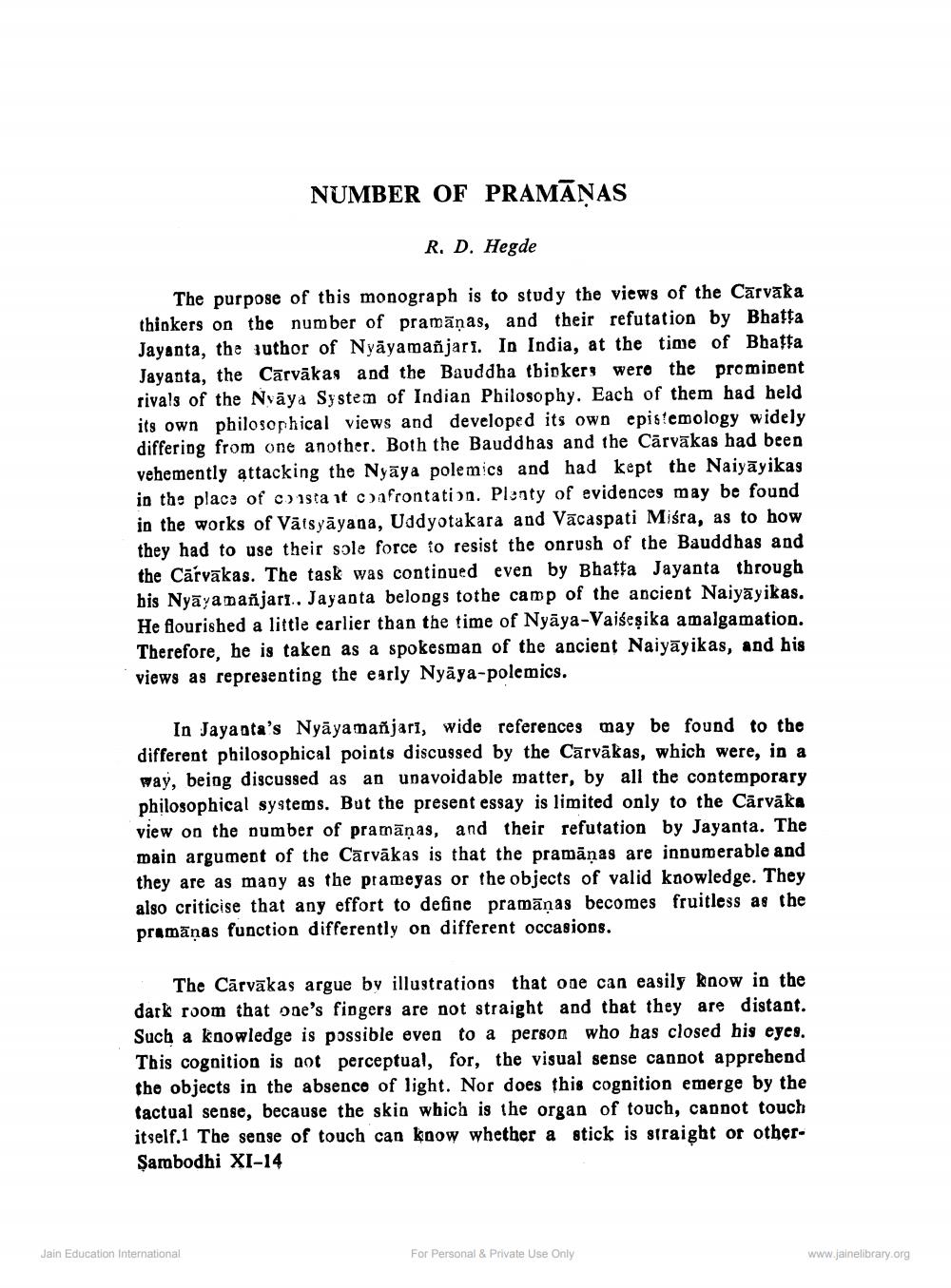________________
NUMBER OF PRAMĀŅAS
R. D. Hegde
The purpose of this monograph is to study the views of the Cārvāka thinkers on the number of pramāņas, and their refutation by Bhatta Jayanta, the futhor of Nyāyamañjari. In India, at the time of Bhatta Jayanta, the Cārvākas and the Bauddha thinkers were the prominent rivals of the Nvāya System of Indian Philosophy. Each of them had held its own philosophical views and developed its own epistemology widely differing from one another. Both the Bauddhas and the Cārvākas had been vehemently attacking the Nyāya polemics and had kept the Naiyāyikas in the place of costa it cafrontation. Plenty of evidences may be found in the works of Vätsyāyana, Uddyotakara and Vācaspati Misra, as to how they had to use their sole force to resist the onrush of the Bauddhas and the Cārvākas. The task was continued even by Bhatta Jayanta through bis Nyāyanañjari.. Jayanta belongs tothe camp of the ancient Naiyāyikas. He flourished a little earlier than the time of Nyāya-Vaiseșika amalgamation. Therefore, he is taken as a spokesman of the ancient Naiyāyikas, and his views as representing the early Nyāya-polemics.
In Jayanta's Nyāyamañjari, wide references may be found to the different philosophical points discussed by the Cārvākas, which were, in a way, being discussed as an unavoidable matter, by all the contemporary philosophical systems. But the present essay is limited only to the Cārvāka view on the number of pramāṇas, and their refutation by Jayanta. The main argument of the Cārvākas is that the pramāņas are innumerable and they are as many as the prameyas or the objects of valid knowledge. They also criticise that any effort to define pramānas becomes fruitless as the promānas function differently on different occasions.
The Cārvākas argue by illustrations that one can easily know in the dark room that one's fingers are not straight and that they are distant. Such a knowledge is possible even to a person who has closed his eyes. This cognition is not perceptual, for, the visual sense cannot apprehend the objects in the absenco of light. Nor does this cognition emerge by the tactual sense, because the skin which is the organ of touch, cannot touch itself.1 The sense of touch can know whether a stick is straight or otherSambodhi XI-14
Jain Education International
For Personal & Private Use Only
www.jainelibrary.org




